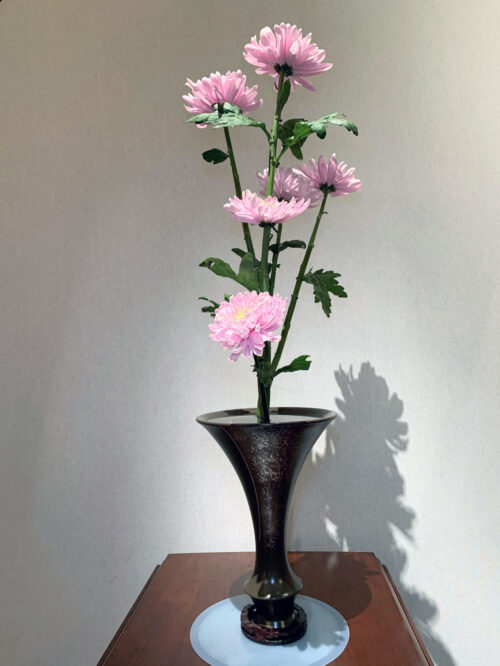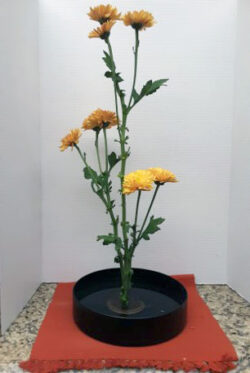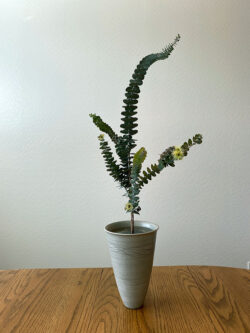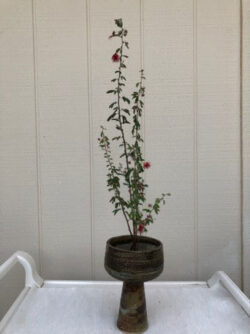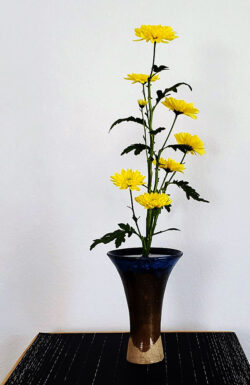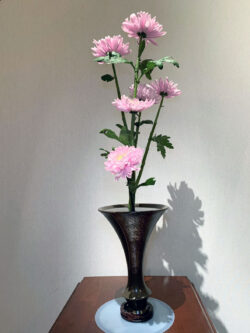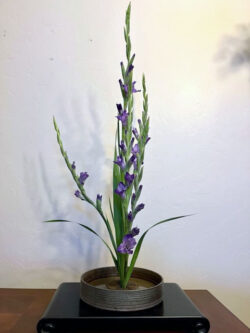A few weeks ago did I call Kakehana challenging? Compared to Isshuike, Kakehana is a breeze, or maybe a walk in the park.
Isshuike is a one-material shoka shofutai (a very traditional arrangement). Sounds as if it might be easy…only one material to work with, but to get each of the 5 or 7 or 9 stems or branches into exactly the right proportions with the correct bends is definitely a challenge. But the 7 participants had the very professional help of Linnéa Storm, sensei, so we all ended up with something to be proud of. (See photos.) The materials chosen went from mums to gladiolus to eucalyptus to fairy duster to sage plus several others. (See photos again.)
Some of the questions posed to our sensei:
Can the number of stems be an even number or must there be five, seven, or nine?
Answer: In the traditional arrangement, there is an odd number of stems in keeping with the culture of Japan. Some professors today have allowed some leeway; however, there must be a strong reason for using an even number.
What type of container is appropriate? Tall or suiban style?
Answer: Either one is fine. Again, traditionally shoka shofutai is placed in a container with a smooth round edge since the container represents the earth.
How many stems comprise tai?
Answer: This is up to the arranger—one or two or three are possible. If you use three, it is not necessary to use the nejime of shoka nishuike ( tai shin, tai tani, tai saki).
Enough info for now? Good, stay tuned for write-ups on the Japanese professor’s workshops on October 22.

